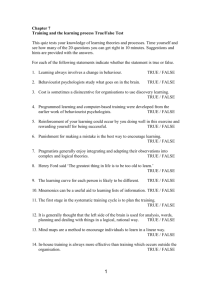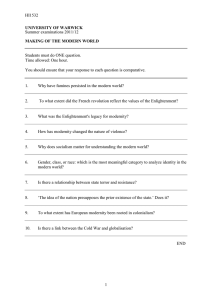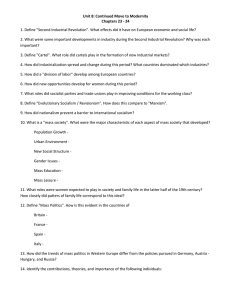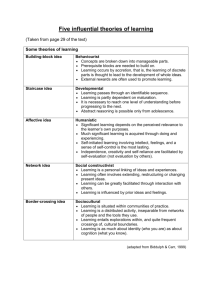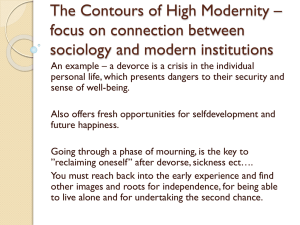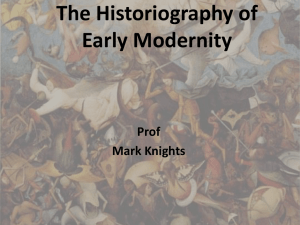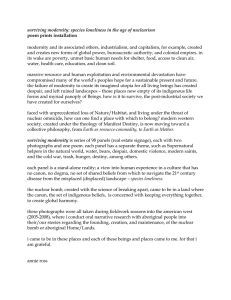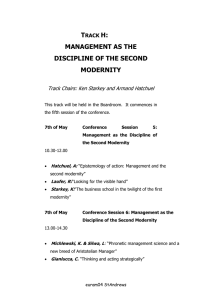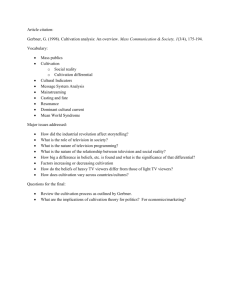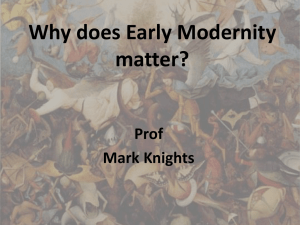Lecture 1
advertisement
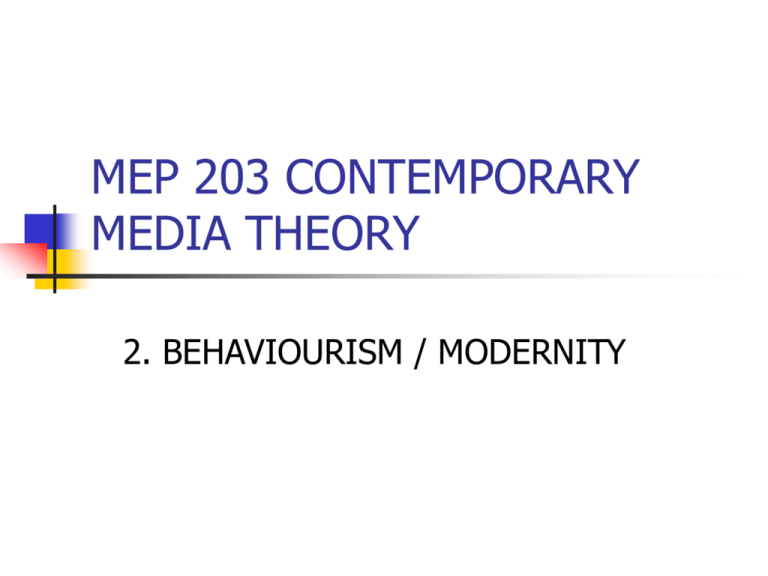
MEP 203 CONTEMPORARY MEDIA THEORY 2. BEHAVIOURISM / MODERNITY Behaviourist approaches Direct effects (the ‘stimulus–response model’) Social cognitive theories Cultivation and agenda setting Limited effects (the ‘active audience’ model) Media and modernity (NOTE: a different perspective) Direct effects Media stimulus audience response Wertham’s (1955) five psychological effects of media targeted at children (esp. crime comics and TV): passivity, misconceptions of reality, imitation, identification and desensitization Audience assumed to be isolated individuals Laboratory methods used in psychological research are problematic (see Gauntlett 1995) – artificial, can only measure short-term responses/effects, neglect social influences on respondents’ behaviour Social cognitive theories Social learning / modelling theory (Bandura): media provide sources of observational learning, esp. for kids, as evident from the BoBo doll experiment (?) Priming: the process of mental association between mediated and personal experience (e.g. when music makes us recall memories) Cultivation and agenda setting Cultivation theory is based on levels of reception to TV in particular Content and survey analysis deployed Heavy viewers are likely to change their values and beliefs with increased exposure to representations of violence TV causes ‘Mean World syndrome’ Agenda-setting theory argues that the news agenda affects the public agenda Prominent news and views become important to people’s everyday opinions and actions Limited effects Two-step flow model (Katz and Lazarsfeld 1955): media messages flow to opinion leaders, who mediate these messages to other individuals Uses and gratifications theory: individual needs generate expectations of media – the media in turn gratify these needs (needs precede effects) Media and modernity The 2nd IR occurs in USA c.1870: electricity, mass production, mass consumption, advertising, cinema, automobile, radio Modernists (e.g. the Leavises) promote a minority culture (educated elite) to counter the threat of cheap mass culture on the individual personality Individual character becoming other-directed: ‘mass media serve as tutors’ (Riesman 1961: 290) instead of parents, teachers, etc. Conclusions Behaviourist theories of media effects are diverse and draw on different methods and modes of analysis Long history of theory/debate continues today: eg, Sigman (2005) links ADHD to children who watch TV indiscriminately But evidence to prove ‘effects’ remains inconclusive e.g. role-play CVGs re: visual impairments, relation to US gun/sniper culture
